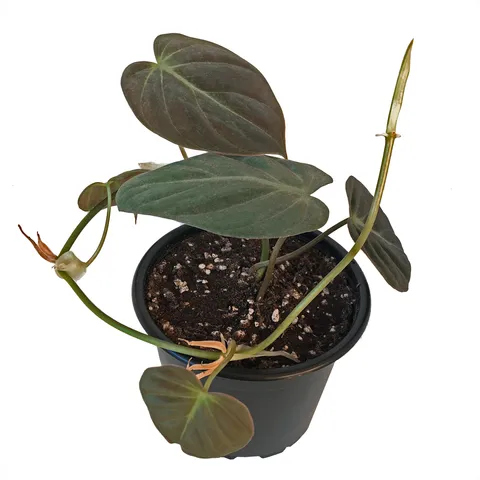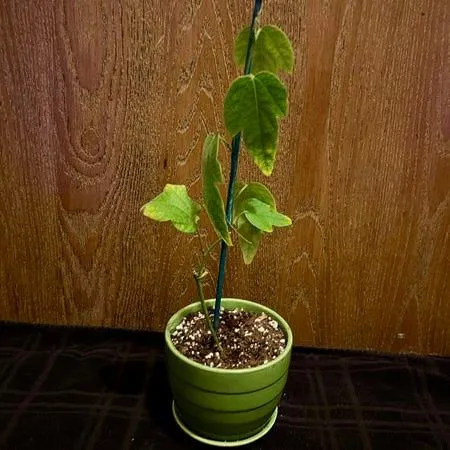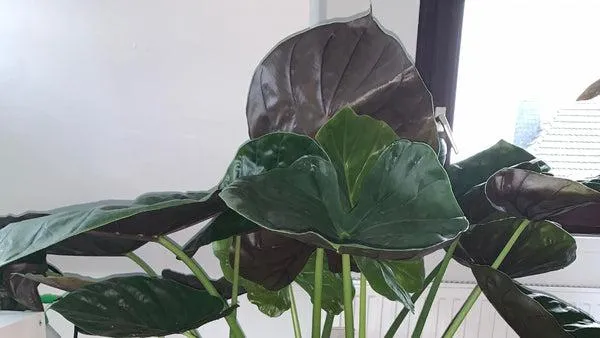Everything You Need to Know About the Gorgeous Velvet Plant
If you’re searching for information on velvet leaves plant, you’ve come to the right place. The velvet plant, or velvet leaf as it’s also known, is a beautiful foliage houseplant admired for its unique velvety leaves. In this article, I’ll cover everything from the origins and care of this plant to tips on maximizing its luscious texture. By the end, you’ll have all the knowledge you need to grow a gorgeous velvet plant of your own.
Getting to Know the Velvet Plant
Origins: The velvet plant, scientifically known as Gynura aurantiaca, is native to Australia and parts of Asia. Its common name comes from its remarkably soft leaves, which feel similar to velvet fabric under your fingers. It was first discovered by Europeans in the early 19th century.
Leaf Appearance: As mentioned, the defining feature of this plant is its velvety leaves. Its oval-shaped leaves range in size from 2-5 inches long and have fuzzy hairs on both surfaces that give them a soft, plush texture. The leaves are typically a mix of green and maroon or purple colors, though cultivars with different hues exist.
Growth Habit: Velvet plants grow as compact, mounding perennials or indoor shrubs. They reach heights between 1-3 feet tall and spread about as wide. Their branches are covered with leaves and tend to flop over if not staked or trained upright.
Caring for Velvet Plants
Now that you know the basics about velvet plants, here are some tips for growing one indoors as a houseplant:
- Light: Place your velvet plant in bright, indirect sunlight. Too much direct sun can scorch its leaves overtime. East or west-facing windows provide suitable filtered light.
- Water: Water when the top inch of soil feels dry. Be sure the drainage holes allow excess water to escape. Overwatering causes browning foliage.
- Soil: Use a well-draining potting mix suitable for indoor plants. Don’t let the roots sit in waterlogged soil.
- Fertilizer: Feed monthly in the spring and summer with a balanced liquid houseplant fertilizer diluted to package instructions.
- Temperature: Keep velvet plants between 60-75°F for optimal growth. Avoid drastic temperature fluctuations.
Proper care will keep your plant’s velvety leaves lush and attractive. With practice you’ll get the hang of the balance its particular needs require.
Propagation and Plant Care Tips
Beyond basic care, here are some extra tips for maximizing your velvet plant’s lush texture:

Pruning: Regularly remove leggy stems at the base to encourage bushy new growth. Cut stems back to a set of healthy leaves.
Staking: Taller cultivars benefit from staking to maintain their upright form as stems get heavy. Soft woven ties work well.
Repotting: Transfer to a slightly larger pot annually in spring if roots are crowding the drainage holes. Repotting refreshes the soil.
Propagation: Cuttings root readily in water or soil. Simply strip lower leaves, place stem ends in water, and roots will form in 1-4 weeks.
Humidity: Mist foliage daily and group with other plants to raise ambient humidity, which sustains maximum plushness.
Powder Prevention: Wipe leaves gently with a damp cloth to remove dust buildup that could mar the velvety finish over time.
With a little TLC your plant’s soft leaves will thrive. From my experience, velvet plants are among the most rewarding indoor foliage for their unique texture alone.

Caring for Velvet Plants in Different Conditions
While the care guidelines I’ve discussed apply to typical indoor conditions, velvet plants can also flourish in other settings with some adjustments:
Outdoors (Summer): In zones 9-11, velvet plants make striking patio containers. Move them to morning sun and partial afternoon shade, and water more frequently.
Low Light: For low-light areas, choose a cultivar with darker leaves like ‘Quinquecolor’ that tones down leaf variegation. Reduce fertilizer to avoid lush growth.
Dry Indoor Areas: Use a pebble tray filled with water to enhance humidity around the plant. Check soil more often and water before it fully dries to preserve leaf texture.
Pets and Children: Toxic to pets if ingested, so keep out of reach. Also avoid placing where little hands can disturb leaves indoors. Rubbing degrades the hairs over time.
With adjustments to light, moisture and fertilizer levels, velvet plants can thrive in a variety of conditions. They remain a beautiful foliage option for many home environments.
Troubleshooting Common Velvet Plant Issues
No plant is completely problem-free, but by familiarizing yourself with typical velvet plant issues you can resolve them with care adjustments:

Leaf Browing/Dropping: This issue is usually caused by overwatering. Check soil moisture regularly and improve drainage if needed by elevating the pot.
Leaf Discoloration: Yellow or brown streaking indicates a nutrient deficiency. Apply a balanced fertilizer to green up foliage gradually. Quick fixes can burn plants.
Pest Infestation: Check under leaves for signs of pests like spider mites, scale or mealybugs. Isolate and treat with proper insecticidal soap or systemic insecticide in bad cases.
Leggy Growth: This is a sign of low light. Move the plant to a brighter spot and consider pruning or repotting to encourage bushier regrowth.
Powdery Mildew: A rare fungal disease, more common in humid environments. Improve ventilation and wipe down foliage often with a water/alcohol solution.
Being aware of potential problems lets you catch them early for the best outcomes. With some basic problem solving skills, velvet plants stay healthy indoors.
Final Thoughts on Velvet Plants
In summary, velvet plants make gorgeous foliage additions to both bright and low-light indoor spaces. Their soft leaves add luxurious texture like no other houseplant. With care tailored to their needs, they flourish for years, bringing unique visual appeal.

From my experience caring for many velvet plants, the rewards of nurturing one far outweigh the minimal effort required. Whether placing them on a side table or as a living room accent, their presence upgrades any setting. I hope this article has imparted all you need to successfully grow and enjoy your own beautiful velvet plant for seasons to come. Feel free to experiment as you gain experience caring for it. Happy planting!
Important Facts About Velvet Leaf Plants
| Characteristic | Details |
|---|---|
| Leaf Texture | Velvety or fuzzy leaves that feel soft to the touch |
| Leaf Color | Dark green on top, pale green underneath with vivid red or purple stems |
| Growth Conditions | Prefers partial shade, moist well-draining soil, hardy in zones 7-11 |
| Flower Type | Small yellow or green flowers that bloom in summer |
| Fruits/Seeds | Produces seed pods containing hundreds of small seeds that can remain viable for years |
FAQ
- What kind of plant is a velvet leaf plant?
- The velvet leaf plant is a type of ornamental plant with leaves that feel soft and fuzzy, like velvet. It is commonly known as a “fuzzy leaf plant”.
- How do you care for a velvet leaf plant?
- To care for a velvet leaf plant, you’ll need to water it when the soil becomes dry. Be careful not to overwater it though, as soggy soil can damage the roots. Place it in bright, indirect sunlight and keep the temperature warm. You may need to remove dead or damaged leaves periodically.
- What colors do velvet leaf plants come in?
- Velvet leaf plants come in a variety of colors. Some of the more common colors are bright green, deep red, burgundy, and shades of purple. Certain kinds might have leaves with marbled patterns or edges that are a contrasting hue.
- Do velvet leaf plants grow back if you cut them?
- Yes, velvet leaf plants are able to regrow if you cut or trim them. You can cut stems right above a node to encourage bushier growth. Cut stems will form roots in water and can be replanted. It’s best to cut stems in spring or early summer to give new growth time before winter.
- Are velvet leaf plants toxic to pets?
- While velvet leaf plants are generally considered non-toxic to pets, it’s always best to keep them out of reach if you have inquisitive animals. Like many houseplants, if ingested in large amounts they could possibly cause mild stomach upset. So it’s wise to err on the side of caution with pets and kids.
Additional Care Tips
Velvet leaf plants have vibrant leaves that add a nice pop of color or texture to any room. However, they may require some regular TLC to stay looking their best. For example, you’ll want to check them over for signs of pests every once in a while. Mostly-harmless bugs like spider mites can sometimes bother fuzzy plants. Spraying with neem oil can help deter these small invaders. You may also need tostake tall stems so they don’t grow lopsided. Overall with some basic care, a velvet leaf plant will reward you with its beautiful foliage for ages!
